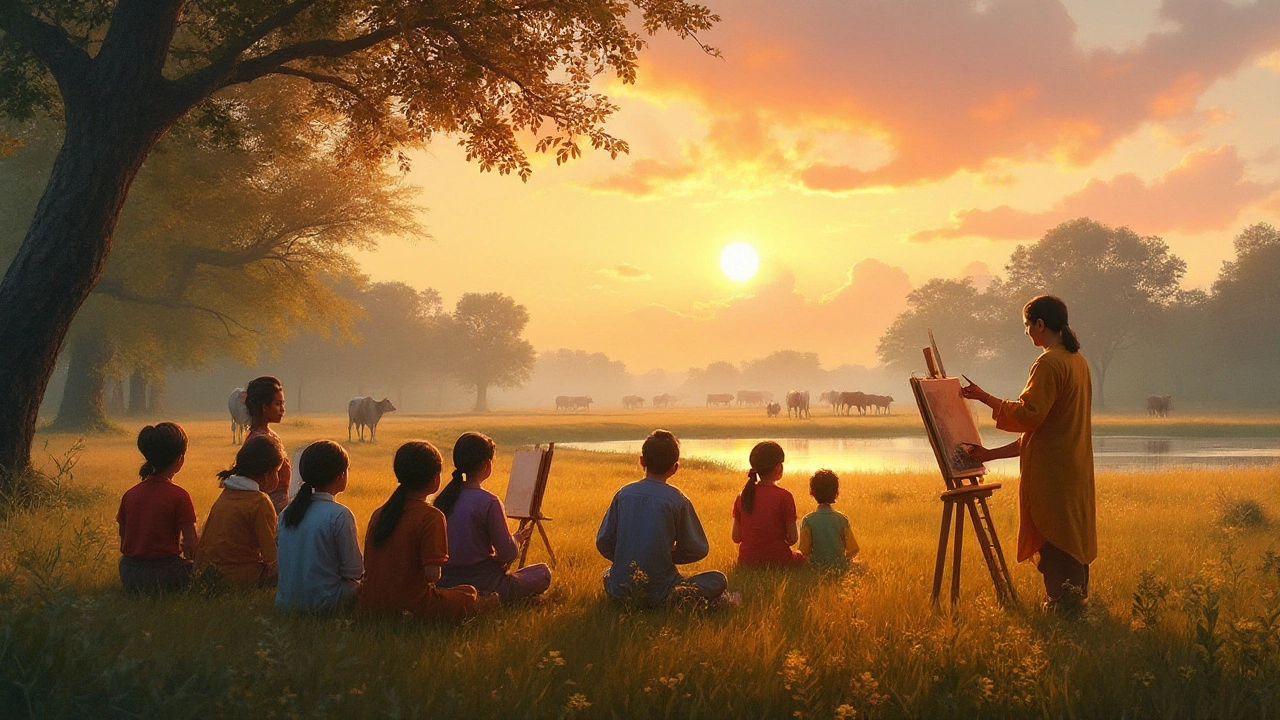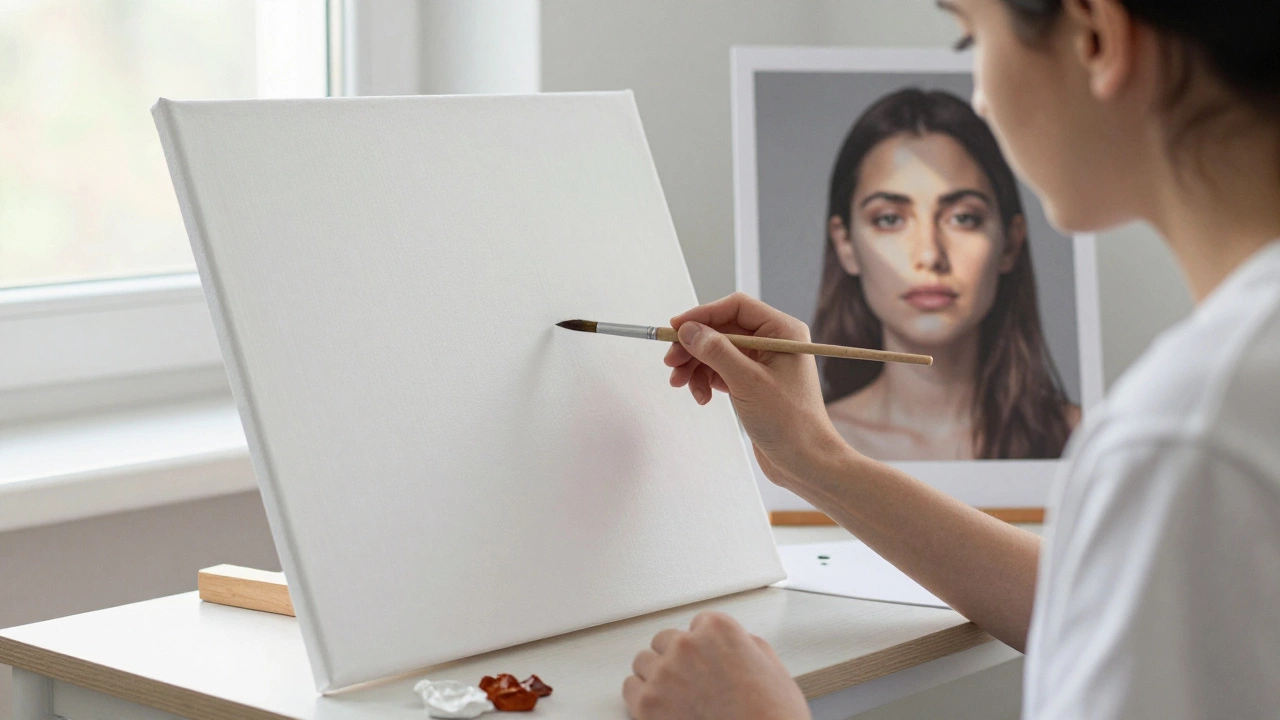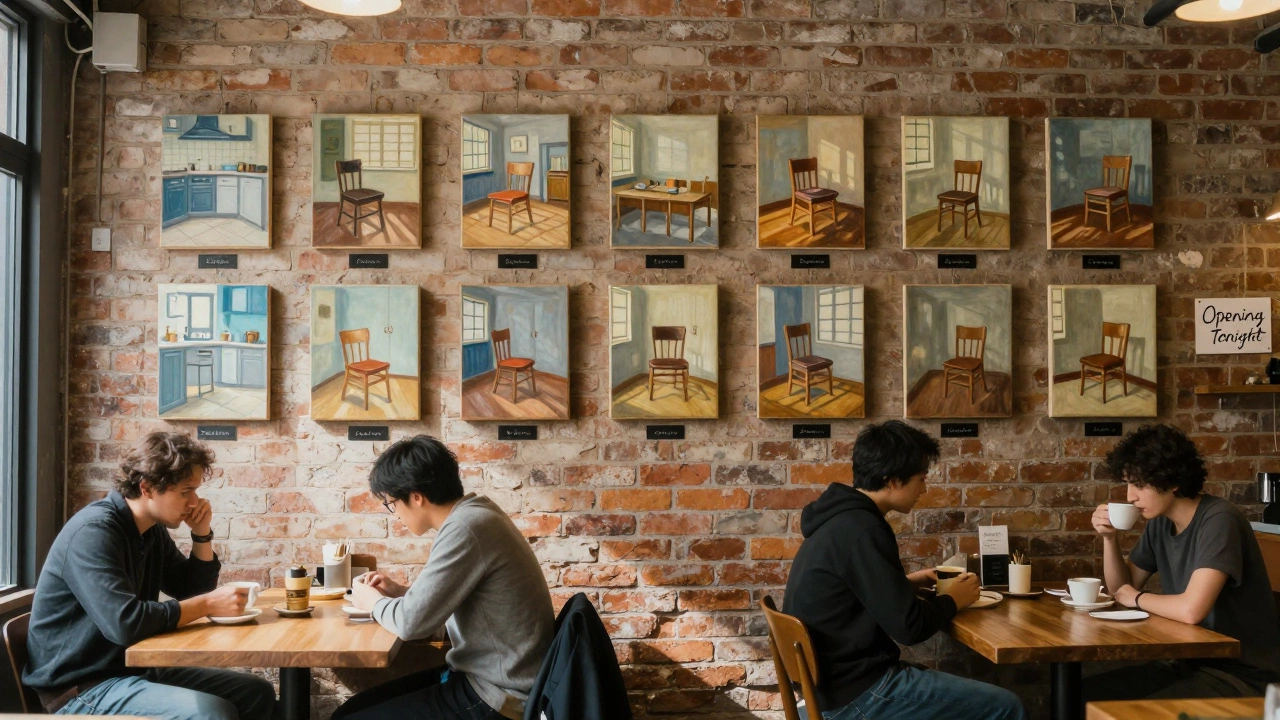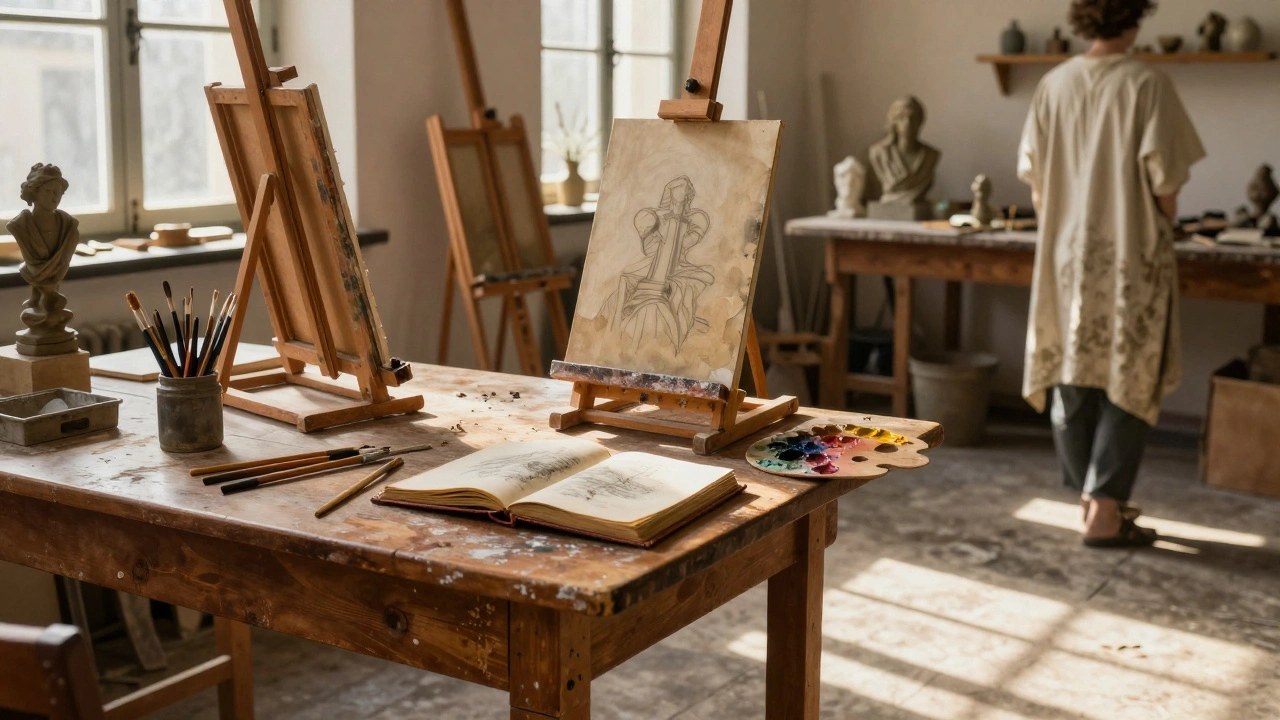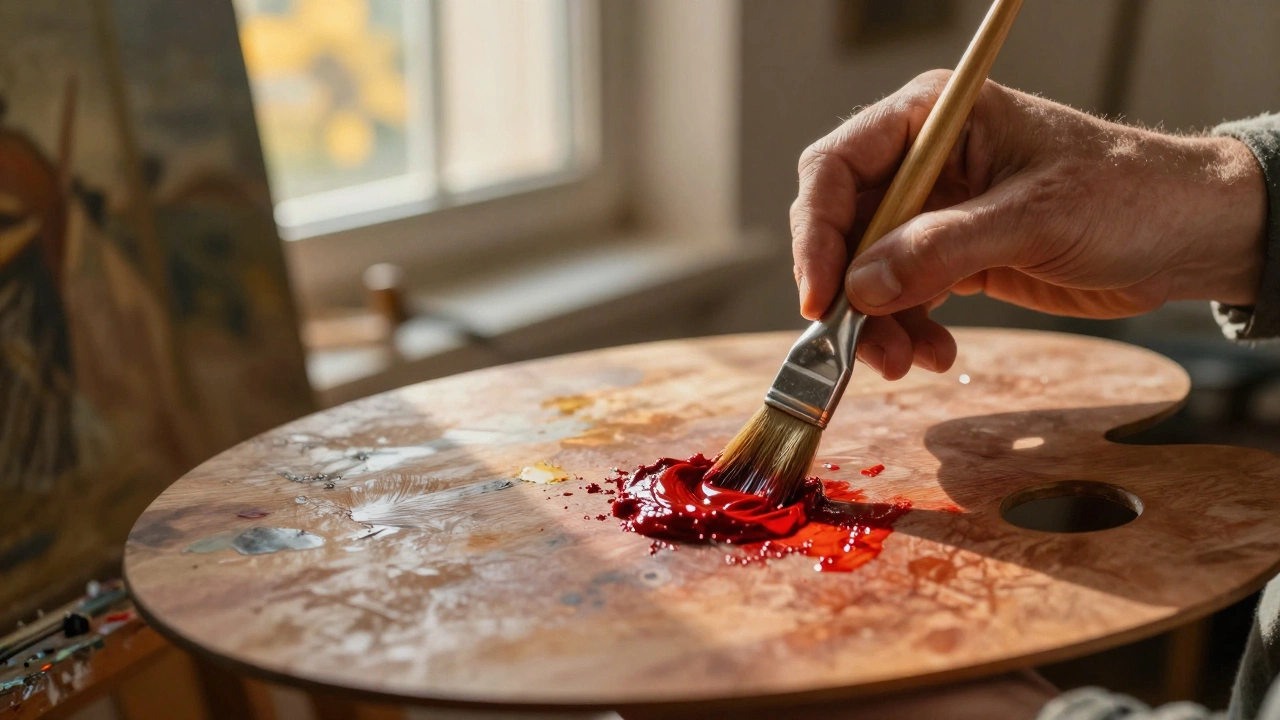Landscape painting is a beloved tradition in the art world, offering a window into nature's calming expanse. When we talk about the first rule of landscaping in paintings, it's not just about putting brush to canvas. It's about observing the world with intent and understanding the nuances that bring a scene to life.
The essence of a great landscape lies in its composition and choice of colors, mirroring the real world's hues and tones. Artists must often see beyond what's visible, interpreting natural elements to capture the emotions they evoke. As you embark on this artistic journey, think of every stroke as a step deeper into nature's embrace, where each decision made on the canvas reflects a personal connection to the scene.
Remember, painting landscapes is not just a technical skill but a way of seeing and expressing the beauty that surrounds us every day. Whether you're standing before a grand mountain range or a quiet, sunlit meadow, the opportunity to transform these views into art is both an exciting and deeply rewarding endeavor.
- Understanding Nature's Palette
- The Role of Composition
- Techniques to Enhance Depth
- Capturing Light and Shadow
- Infusing Personal Expression
Understanding Nature's Palette
Nature's palette is one of the most magnificent and unpredictable assortments of colors one can find. For artists, diving into the world of landscape painting demands more than just a superficial glance at trees, skies, or waters. It's about understanding the subtleties of color and how these elements work together to create the harmony we find so captivating in the natural world. Trees aren’t just green, skies hold more than just blue, and the earth beneath our feet is far richer than mere brown. A mastery of these colors can transform a painting from being just a landscape to a living experience.
One must begin by observing how light affects colors in nature—notice how the golden hour bathes everything in warmth, creating long shadows and a magical glow. During these fleeting moments, a burst of orange might suddenly streak the sky, or a tranquil blue can become a deep lavender. The colors shift continuously, and the challenge lies in capturing these transitions on the canvas. It's intricate, and it requires a keen eye for fine details that many overlook. En plein air painting, the practice of painting outdoors, offers an unparalleled experience to witness and document these shifts, allowing artists to respond directly to the changing environment.
In his insightful writing, the eminent Claude Monet once remarked,
"Color is my daylong obsession, joy, and torment."This encapsulates the struggle and triumph every artist faces with nature's complex palette. Nature defies rigid constraints and often surprises, inviting artists to experiment and explore new ways of seeing. Through this exploration comes an appreciation for the blending of unlikely hues, teaching artists to view their surroundings as an elaborate tapestry of tones and shades.
Utilizing a nature-inspired palette effectively also involves knowing how colors interact within a composition. Understanding primary, secondary, and tertiary colors and how they blend to create a cohesive scene is crucial. Artists study not just the colors but their emotional impact—how a soft green can bring calm, while a vivid red might evoke drama. A successful artwork finds balance, allowing the eye to travel across the canvas seamlessly, drawn by the beauty of harmonious colorplay.
To encapsulate the essence of a vista, an artist must not shy away from unusual combinations. Mixing warm and cool tones might help achieve the depth and realism desired. This approach also provides emotional depth, where the choice of specific shades can convey a mood or story that goes beyond visible reality. A complementary landscape painting ensures that each color serves the vision, articulating a specific mood both subtly and powerfully.
For a deeper understanding, consider examining works by masters like the Impressionists, who embraced the challenge of capturing fleeting moments. Their bold use of color challenged conventions, creating landscapes that are vivid, dynamic, and deeply evocative. These pieces are timeless lessons in how powerful nature's palette can be when wielded with precision and passion.
The journey to mastering nature’s palette is filled with discovery; every experience deepens one's appreciation of color and nature's unfathomable beauty. As you tune into these nuances with each brushstroke, the landscape before you transforms, becoming not only a subject to be captured but an expanse to be celebrated.
The Role of Composition
The significance of composition in landscape painting cannot be overstated, as it forms the very backbone of how a scene comes together on the canvas. When discussing composition, one must think of the arrangement of elements within a painting that leads viewers through the visual journey you've crafted. It's often compared to the directing of a performance, where every actor (or element) plays a vital role in telling the story. Consider the techniques of balance, symmetry, and asymmetry, which are tools artists use to guide the eye. Whether you follow the rule of thirds or prefer the freedom of breaking the rules to allow creativity to flourish, composition invites both structure and innovation.
Delving into historical insights helps enrich understanding; for instance, Claude Monet often emphasized how composition creates harmony, aligning with the natural flow of the landscape itself. He once said,
"Everyone discusses my art and pretends to understand, as if it were necessary to understand, when it is simply necessary to love."This quote beautifully highlights how composition is less about rigid rules and more about the emotions conveyed through thoughtful arrangement. Attention to the horizon line, for example, can significantly alter the depth and perspective of the painting. A lower horizon might emphasize a magnificent sky, whereas a higher one could give prominence to the foreground details.
Mastery of composition also involves understanding the relationship between negative and positive space. Negative space, the area around and between the subjects of an artwork, is as crucial as the positive elements depicted. It can create an illusion of movement or tranquility within the landscape. Some artists choose to include pathways or streams that lead the viewer’s gaze deeper into the painting, creating a narrative journey. The dynamic between the elements on the canvas can be likened to an orchestra where each musical note must be intentional and precise to form a harmonious melody.
For those learning or teaching landscape composition, it might be useful to visualize with simple geometric shapes. By placing circles, triangles, or rectangles within the scene, one can better grasp how each part of the composition relates to the whole. It’s a method reminiscent of pointillism, where small distinct dots of color merge in the viewer’s eye to create a full image. This technique allows painters to experiment with balance and focus, refining how each portion of their artwork interacts with the viewer. This approach is not just educational but can also be quite inspiring, showing how components unite to craft something larger than themselves.
Finally, artists should not shy away from exploring color composition. The vividness of hues and their placement throughout a painting can evoke a range of emotions. A muted color palette might suggest tranquility, while vibrant shades could indicate energetic passion or turmoil. This idea is echoed in works from Vincent van Gogh, who utilized vivid and swirling patterns, turning a simple night sky into an emotional tapestry. An understanding of color theory can transform an abstract concept into a tangible painting filled with meaning.
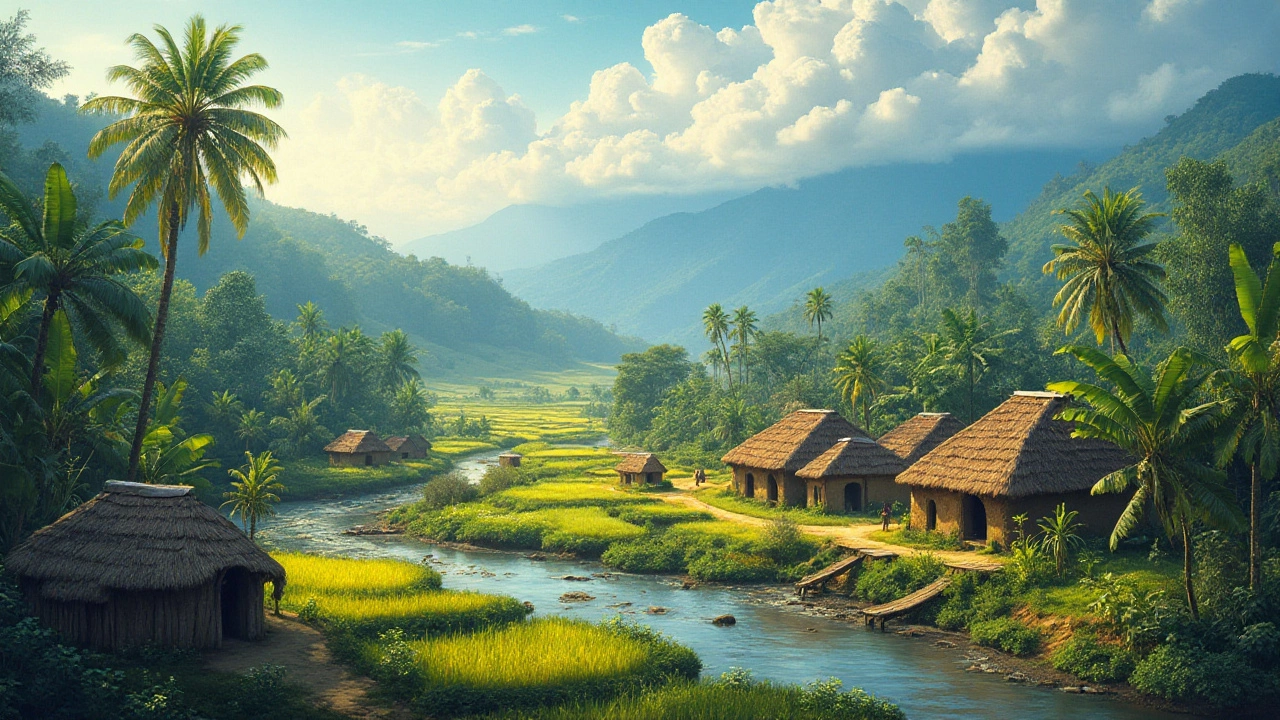
Techniques to Enhance Depth
Creating a sense of depth in landscape paintings is akin to opening a doorway into a world that feels limitless. Artists employ a variety of clever techniques to achieve this compelling illusion of space on a mere flat surface. The concept hinges significantly on perspective—both linear and atmospheric. Linear perspective involves depicting objects smaller as they recede into the distance, guiding the viewer's eye along imagined lines that converge on a point, usually the horizon. This method has roots deep in art history, being formalized during the Renaissance when artists like Leonardo da Vinci revolutionized the craft by portraying realistic dimensions in their artwork.
Equally critical is atmospheric perspective, which relies on the visual phenomenon where distant objects appear less distinct and bluer due to the scattering of light. This is most pronounced in scenes with mountains or vast plains where artists create depth by subtly blending softer, cooler colors for distant elements and warmer tones in the foreground. To achieve realistic landscapes, one adds haziness or reduced contrast for far-off objects, giving the painting a breath-like quality. As acclaimed artist J.M.W. Turner once said, "Atmosphere is my style," emphasizing the ethereal effect of light and color in depth perception.
"The aim of art is to represent not the outward appearance of things, but their inward significance." - Aristotle
Another technique involves utilizing overlapping elements. When one object interrupts the contours of another, it reinforces the perception of space. Such layering, often subtle, ensures the viewer recognizes one subject in front and another behind. For those new to landscape art, experimenting with textures in paint can also play a vital role. Thicker paint or impasto techniques can make foreground elements pop, while smoother textures are reserved for background scenery. Delving into the depth ideas and playing with highlights and shadows helps simulate the various elevations seen in landscape painting. Light often dances with shadows, and a judicious use of both can guide viewers through a painting's depths, creating an immersive, three-dimensional effect.
In exploring these techniques, don't overlook the value of color relativity, famously noted by Josef Albers. His studies underlined how colors dramatically change in appearance based on surrounding hues, which offers landscapes painters an unlimited arsenal for depth creation. Thoughtful placement of contrasting or complementary colors can naturally draw the eye further into a scene. Additionally, master painters often frame their landscapes with natural forms—be it a looming tree or a nearby hillside—serving both as a narrative element and as a boundary that tugs the viewer into the painting. These strategic uses of elements on the canvas invite you to explore beyond what's visibly painted.
An interesting fact to ponder is that artists sometimes employ the golden ratio when planning the composition to boost depth perception naturally. This mathematical symmetry is known to be pleasing to the eye and is a subtle method to enhance internal organization within the artwork. Among the celebrated examples is Claude Monet's use of this technique, where his compositions often lead the observer's gaze efficiently through painted gardens or waterways. By blending various techniques—like contrasts, clever uses of lines, colors, and mathematical harmony—landscape artists transform flat canvases into vivid realms that invite endless exploration.
Capturing Light and Shadow
When it comes to landscape painting, one cannot underestimate the profound impact of light and shadow on the artwork's vitality and depth. The dance of light across a landscape is what breathes life into a painting, making it more than just a static image. Artists must learn to interpret and manipulate these elements to create mood and dimension. This begins with observing how light naturally interacts with the environment. For example, the way sunlight stretches across early morning mist can evoke a sense of tranquility, while shadows cast by towering trees might add a layer of mystery.
Understanding light involves recognizing its source, direction, color, and intensity. These factors change throughout the day and with varying weather conditions. Artists often find golden hour—those precious moments after sunrise or before sunset—particularly magical, as the light is soft and diffused. This is where the practice of plein air painting becomes invaluable. By painting outdoors, artists can experience firsthand the subtle shifts in light and shadow, capturing the ephemeral beauty of a scene in real time. Many celebrated painters, like Claude Monet, spent hours observing the same scene under different lighting conditions, which significantly informed their technique and perception of color.
"In order to paint a landscape successfully, one must observe it day after day at all hours, in all its moods." —Winslow Homer
Aside from light, shadows play a crucial role in providing structure and contrast within a painting. Shadows indicate depth and form, guiding the viewer's eye through the composition. An effective method for accentuating shadows is to use complementary contrasts of color. By painting shadows with cooler hues, such as blues or purples, alongside warm sunlit areas, an artist can create a striking visual contrast that makes the painting feel alive. It's also essential to consider the softness or hardness of edges within shadows, as this can suggest different textures—whether it’s the soft curve of a hill or the crisp outline of architectural elements.
Experimentation is key—try altering brushstrokes for different light effects, using quick, loose strokes to capture fleeting light, or firm, deliberate marks to convey solidity and volume. Emphasizing light and shadow within your landscape painting isn't solely about accuracy; it’s about telling a story. Each contrast, each subtle interplay between bright and dark, can express emotions that resonate with viewers. Many might argue that capturing the essence of light and shadow is the heart of successful landscape art—it’s an invitation to see the world as both a harmonious whole and an intricate collection of fleeting moments. Embrace the challenge, and let your brush follow the lead of the sun and shadows it casts.
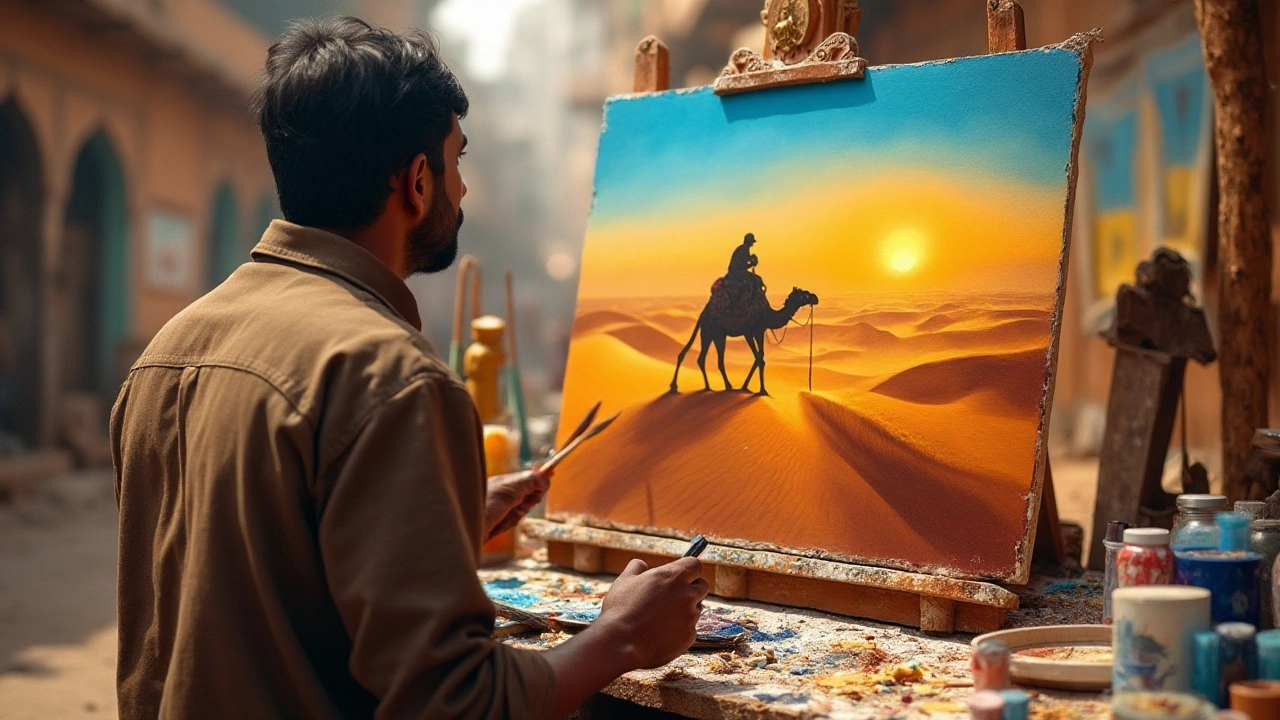
Infusing Personal Expression
Creating a landscape painting isn’t just about replicating what you see; it's also an endeavor to blend reality with personal imagination, making each painting genuinely unique. Here lies the heart of the artistry: infusing personal expression. This aspect of landscape art, more than any technique, is what gives a piece its soul. While the natural world offers a stunning array of vistas, it's how artists choose to interpret and present these scenes that sets one artwork apart from another.
When an artist infuses their work with personal expression, they invite viewers into their world, offering a glimpse into their perspective of nature. This involves a selective focus, where certain elements might be emphasized or diminished, depending on the artist's emotional connection to the scene. For instance, Vincent Van Gogh's 'Starry Night' doesn't merely depict a night sky; it swirls with emotion, showing the tumultuous feelings of the artist within every stroke. As Van Gogh himself once wrote,
"I dream my painting and I paint my dream."This quote perfectly encapsulates the essence of personal expression, where inner visions are vividly brought to life.
To effectively convey personal expression, artists often rely on the manipulation of colors and brushwork. By altering the natural color palette, they can evoke different moods—fiery reds and oranges might suggest warmth and passion, while cool blues and greens typically calm and soothe. Texture, too, plays a critical role. Thick impasto can add a sense of movement or weight, while delicate washes might suggest fleeting light or air. Each choice an artist makes is a deliberate step towards expressing their unique vision.
Additionally, artists may create symbolism within their work to embed deeper meaning. For instance, a single tree could symbolize solitude, resilience, or even the passage of time, depending on its portrayal within the painting. This approach allows viewers to engage with the art on multiple levels, finding their interpretations and connections. Such expression transforms a simple landscape into a tapestry of ideas and emotions, where each viewer might discover a new story.
In the realm of landscape painting, staying true to one's expression can be both a challenge and a delight. It demands introspection and a willingness to diverge from reality to find your voice. Through persistent practice and experimentation, artists can develop a signature style that is identifiable in its subtle nuances. This personal touch not only enriches the art but also uplifts the artist, creating a symbiotic relationship between creation and creator.
The landscapes we paint do not always mirror what we see with our eyes, but rather, what we perceive with our hearts. And that is the essence of personal expression—a timeless dance between the real and the imagined, captured forever on canvas, waiting patiently for the next viewer to unveil its secrets.
